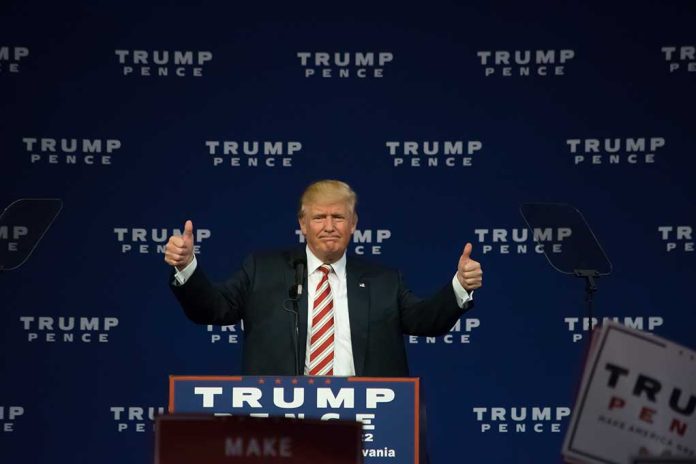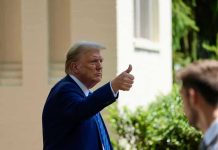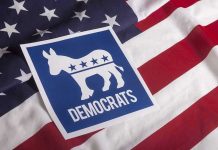
President Donald Trump secures a major victory as a federal judge rules his tariff strategy falls within the legal scope of the Emergency Powers Act, dealing a significant blow to the twelve states challenging his economic policies.
Key Takeaways
- Twelve states have challenged President Trump’s tariffs in court, claiming he exceeded his authority by invoking the 1977 International Emergency Economic Powers Act.
- Trump’s administration successfully argued that trade deficits constitute a national security threat, with the federal court upholding the President’s emergency powers.
- The U.S. recently secured a historic trade agreement with China, reducing tariffs by 115% while maintaining a 10% tariff for leverage.
- Trump’s tariff strategy aims to strengthen domestic manufacturing, protect American workers, and reduce U.S. dependence on foreign adversaries.
- Despite legal challenges, the tariffs have had minimal impact on consumer prices while successfully pressuring trading partners into fairer agreements.
Legal Battleground Over Presidential Authority
A coalition of twelve states has petitioned a federal court to strike down President Trump’s sweeping tariffs, arguing he has overstepped his constitutional authority. The legal challenge, heard by a three-judge panel of the U.S. Court of International Trade in New York, represents one of at least seven lawsuits targeting Trump’s aggressive trade policy. The states contend that the 1977 International Emergency Economic Powers Act (IEPPA), which Trump invoked to declare trade deficits a national emergency, does not authorize tariffs and that trade imbalances do not constitute an “unusual and extraordinary threat” as required by the statute.
“This is not an unusual problem,” argued Brian Marshall, representing the challenging states, suggesting that trade deficits are normal economic conditions rather than emergencies warranting extraordinary presidential powers. The Trump administration countered by citing historical precedent, pointing to President Nixon’s use of tariffs during a 1971 economic crisis. Brett Shumate, defending the administration, dismissed the challenge as “political” rather than legal, emphasizing the President’s authority to protect national security through economic measures.
Tariffs as National Security Strategy
President Trump’s declaration of a national emergency due to foreign trade practices represents a bold reimagining of economic policy as a national security instrument. The administration has consistently argued that large trade deficits have weakened America’s manufacturing base and supply chains, creating dangerous dependencies on foreign adversaries. This vulnerability, in Trump’s view, constitutes a legitimate national security threat requiring immediate executive action. The tariffs target imports from countries including Canada, China, and Mexico while exempting certain critical goods such as steel, aluminum, and pharmaceuticals.
“Unlike previous administrations, President Trump took a tough, uncompromising stance on China to protect American interests and stop unfair trade practices,” said President Donald J. Trump
The tariff strategy has already produced tangible results, with China agreeing to eliminate retaliatory tariffs and suspend non-tariff countermeasures against the United States. Additionally, a mechanism for ongoing trade and economic discussions has been established between the two nations, with China committing to collaborate on combating the flow of fentanyl and other drug precursors to North America. These achievements validate Trump’s approach of using economic leverage to address both commercial and security concerns simultaneously.
Economic Impacts and Market Response
Despite dire predictions from critics, the economic impact of Trump’s tariffs has been notably measured. While global financial markets showed initial volatility, the U.S. economy has remained resilient. This practical outcome aligns with assessments from economic experts across the political spectrum. Even Janet Yellen, who served as Treasury Secretary under the Biden administration, acknowledged the limited consumer impact of such policies.
“I don’t believe that American consumers will see any meaningful increase in the prices that they face,” said Former Biden Treasury Secretary Janet Yellen.
The recent trade agreement with China demonstrates how Trump’s tariff strategy has strengthened America’s negotiating position. Both nations will lower tariffs by 115% while maintaining an additional 10% tariff, with implementation scheduled for May 14, 2025. This balanced approach maintains pressure on China while creating pathways for increased market access for American exports. The President has retained modification authority to adjust tariffs based on trading partners’ actions, ensuring continued leverage in future negotiations.
Addressing Global Trade Imbalances
At the heart of Trump’s tariff strategy is a determination to correct longstanding trade imbalances that have disadvantaged American workers and manufacturers. The United States has historically maintained one of the world’s lowest average tariff rates while major trading partners imposed significantly higher barriers. Non-tariff barriers in countries like China and India have further restricted U.S. market access, affecting exports and competitiveness. Trump’s approach directly confronts these disparities, creating a more level playing field for American businesses.
“This trade deal is a win for the United States, demonstrating President Trump’s unparalleled expertise in securing deals that benefit the American people,” said President Donald J. Trump. The President’s emphasis on “Made in America” as a priority reflects a recognition that domestic manufacturing capacity is critical to national security. U.S. manufacturing output has declined significantly in recent decades, creating vulnerabilities in supply chains that became painfully apparent during recent global crises. By using tariffs as leverage, Trump aims to incentivize reshoring of production and rebuild America’s industrial base. This strategy represents a holistic approach to national security that recognizes economic strength as the foundation of global power and influence.






